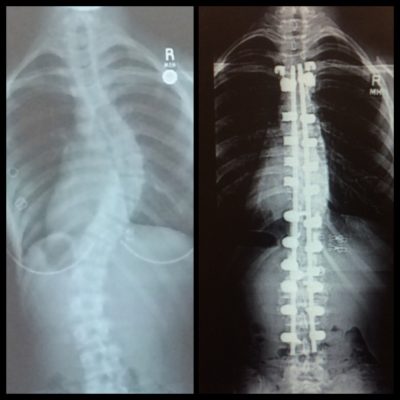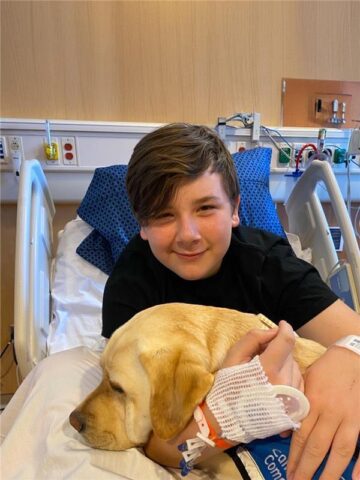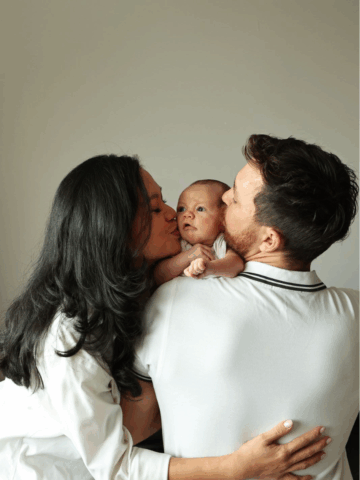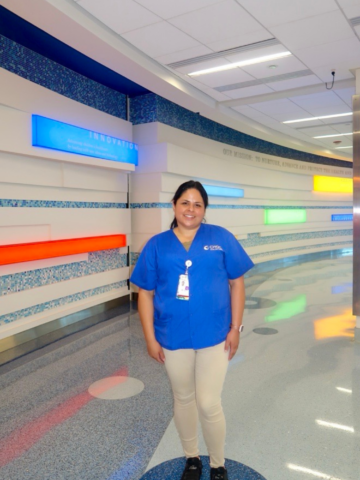During a routine check for scoliosis during physical education class in seventh grade, a teacher noticed a slight curve in Jessica’s spine. A trip to her pediatrician soon followed. X-rays showed a thirty-degree curve and since that was considered slight, follow-up imaging was recommended for a year later. By that time Jessica’s curve worsened by 15 degrees, and she was referred to Dr. Afshin Aminian, pediatric orthopedic surgeon and director of the CHOC Orthopedic Institute.
Bracing was initially recommended to try to prevent Jessica’s curve from getting worse.
“People my age don’t know that much about scoliosis even though it’s so common,” says Jessica. “I only had to wear my brace at night while I was sleeping, so no one ever really saw it or had the opportunity to tease me because of it, but they still asked questions, like was it comfortable or not.”
Although Jessica was vigilant about wearing her brace as instructed, her curve worsened by another twenty degrees, to nearly 70, and surgery was recommended. As a lifelong dancer, and a member of her high school’s competitive dance team, Jessica was initially worried that having surgery to correct this significant curve would affect her flexibility.

“It’s very common for children or adolescent patients to be hesitant or even fearful when they first hear they need surgery,” says Dr. Aminian. “We encourage all of our patients to ask a lot of questions so they really feel like they are involved in their care team. We remind them that the team of orthopedic surgeons at CHOC uses the very latest methods in a setting that’s specially designed for kids and teens, so they are in the best hands possible.”
Jessica’s surgery was ultimately set for winter break during her sophomore year of high school.
“All of my nurses were so impressed that I was up and walking the next day, but after I went home it was harder than I thought to move around” she said.
At a check-up with Dr. Aminian a few weeks later, Jessica was healing so well that she was able to return to school three weeks after surgery, as opposed to the three month break she had expected. Thanks to her flexibility as a dancer prior to surgery, she could even touch her toes at her follow up appointment, to the surprise of her care team.
Getting back into the groove of a full school day did not come without challenges. To protect her spine as it continued to heal, Jessica had to adjust to sitting for longer periods of time, something she slowly worked up to before returning to school. She also brought a small pillow to school to make her desk more comfortable, and made arrangements with teachers to keep textbooks in class so she didn’t have to carry them around.
“For an active person like me, not being able to bend, twist or lift anything for three months was hard, but in the end it made me thankful because my recovery was temporary, and overall I am really healthy,” she says.
Jessica knew she wanted to document her recovery phase, so she asked her mom to film some footage while she was in the hospital. That eventually morphed into a series of YouTube videos educating others on scoliosis, recovery tips, and sharing her own journey with the condition. When she was diagnosed, she knew others who had scoliosis, but no one’s curve was as severe as her own, so some peer-to-peer questions were left unanswered.

“I want other scoliosis patients to know that it’s going to be hard, and you will have times when you can’t do something, but I promise it will get easier if you just go at your own pace and follow your doctor’s guidelines,” she says. “I love getting messages from people that watch my videos, thanking me for helping to calm their nerves before surgery.”
Filming these videos and helping other patients has helped to fill the void that dancing left. After losing one year of practice time due to surgery and recovery, Jessica decided not to go back to dancing.
“I’m busy in different ways now,” says Jessica. “Dancing provided great memories for me, but I’m on to a new chapter now.”
Get more expert health advice delivered to your inbox monthly by subscribing to the KidsHealth newsletter here.
Learn more about CHOC’s Orthopedic and Sports Medicine Services
Our team of board-certified specialists and orthopedics-trained staff provide a full spectrum of care for disorders of the bones, joints, ligaments, tendons and muscles.





